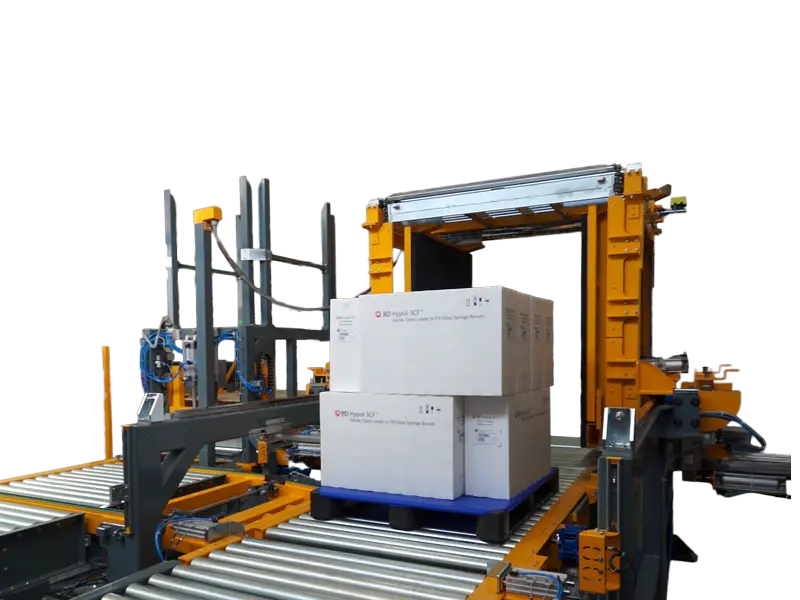Why Are Vietnam's Manufacturers Replacing Manual Handling with Pallet Inverters?
Are your warehouse operations struggling with high labor costs, slow pallet handling, and frequent product damage? You might be manually transferring goods from one pallet to another, a process that seems simple but is secretly draining your resources. This slow, physically demanding work leads to employee injuries, damaged stock, and operational bottlenecks that hurt your bottom line. It's a persistent problem that gets worse as your business grows, making it impossible to keep up with demand and stay competitive.
Vietnamese manufacturers are rapidly replacing manual handling with pallet inverters to dramatically increase efficiency, improve worker safety, and protect their products. A pallet inverter, also known as a pallet changer, is a machine that can safely and quickly rotate a fully loaded pallet 180 degrees. This allows for the swift exchange of pallets, removal of damaged goods from the bottom of a stack, or transfer of loads to different pallet types (like plastic for export or in-house captive pallets) without manual restacking. This single piece of equipment addresses multiple logistical challenges at once.
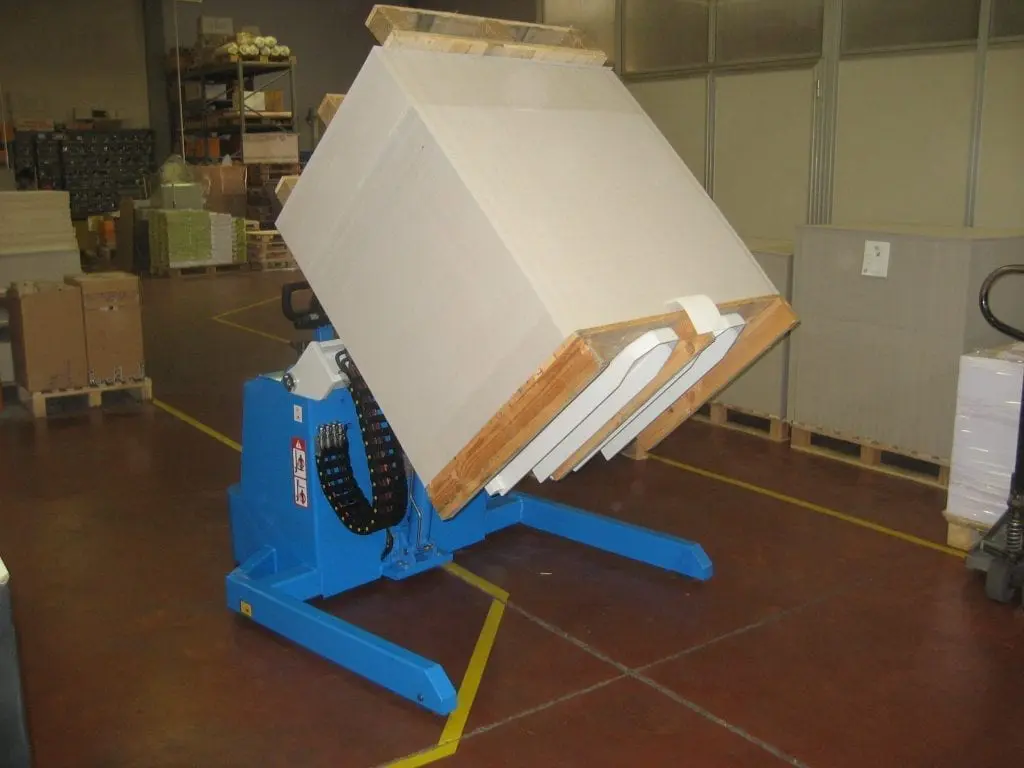
I’ve spent my entire career in the packing and handling industry, first as an engineer and later as a factory owner. I’ve seen firsthand how small changes in process can lead to massive gains in productivity and profit. The shift I'm seeing in Vietnam is significant. It's not just about buying a new machine; it’s a strategic decision to solve core business problems. If you're wondering how this trend in Southeast Asia could possibly apply to your operations, I encourage you to read on. We will explore the specific reasons driving this change and how they can offer a total solution for your own handling challenges.
How Do Pallet Inverters Directly Reduce Operational Costs?
Your team spends hours every day manually unstacking and restacking goods just to switch a broken pallet. This manual labor is expensive and slow, and every minute spent on it is a minute not spent on value-adding activities. The costs add up quickly, not just in wages but also in the delays that ripple through your entire supply chain. What if you could cut that time and labor by over 90%?
Pallet inverters directly reduce operational costs by automating the labor-intensive process of load transfer. Instead of requiring multiple workers to handle goods manually, a single operator can use the machine to invert and swap a pallet in under a minute. This drastically cuts labor hours, frees up employees for more productive tasks, and minimizes the high costs associated with manual handling, such as overtime and worker fatigue.

A Deeper Look at Cost Reduction
When I started my own factory, I tracked every single expense. Labor was always one of the biggest. But it's not just about the hourly wage. The "real" cost of manual labor is much higher. Let's break down how a pallet inverter tackles these costs from multiple angles.
Direct Labor Savings
This is the most obvious benefit. Manually transferring a load from one pallet to another can take two workers anywhere from 15 to 30 minutes, depending on the product. A pallet inverter does the same job with one operator in about 60 seconds. Let's look at a simple calculation.
| Metric | Manual Handling (2 Workers) | Pallet Inverter (1 Operator) |
|---|---|---|
| Time per Pallet | 20 minutes | 1 minute |
| Labor Cost per Hour | $15/worker ($30 total) | $15/operator |
| Cost per Pallet | $10.00 | $0.25 |
| Pallets per Day | 50 | 50 |
| Daily Cost | $500.00 | $12.50 |
| Annual Savings | - | ~$121,875 (250 workdays) |
These numbers are estimates, but they show a clear picture. The savings are not small; they are transformative. This is money that goes directly back into your business for other investments, like new technology or talent.
Reducing Indirect Costs
The savings don't stop with direct labor. Manual handling creates many hidden costs that a pallet inverter eliminates.
- Product Damage: When people manually unstack and restack goods, items get dropped, crushed, or contaminated. This is especially true for fragile goods or heavy bags. A pallet inverter clamps the load securely before rotating, keeping everything stable and intact. This reduces write-offs and customer complaints.
- Equipment Costs: You might think manual is cheaper, but you still need forklifts to move pallets around. With manual restacking, a forklift is tied up for the entire 20-30 minute process. With an inverter, the forklift simply drops the pallet, leaves, and comes back a minute later. This increases forklift utilization and means you may need fewer forklifts overall.
- Space Utilization: Manual restacking requires a large, clear floor area. A pallet inverter has a fixed, compact footprint. This frees up valuable warehouse floor space for storage or other operations.
What Are the Hidden Safety and Product Damage Risks of Manual Handling?
Think about the physical strain on your employees. They are bending, lifting, and twisting all day long, handling heavy and awkward loads. This repetitive motion is a recipe for back injuries, sprains, and other musculoskeletal disorders. These injuries are not just painful for your team; they lead to lost workdays, increased insurance premiums, and potential legal liabilities for your company. It creates an unsafe work environment that hurts morale and productivity.
The primary hidden risk of manual pallet handling is the high rate of worker injury and associated product damage. Repetitive lifting causes chronic injuries, leading to costly workers' compensation claims and absenteeism. Simultaneously, manual handling significantly increases the chance of dropping or crushing goods, leading to direct financial losses from unsellable inventory. A pallet inverter mitigates both risks by mechanizing the entire process, creating a safer and more secure handling environment.
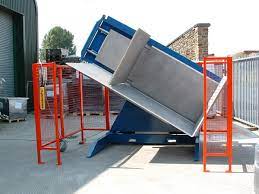
Uncovering the True Cost of an Unsafe Process
In my early days as an engineer, I visited a factory where a worker suffered a serious back injury while restacking sacks of cement. The incident shut down the line for hours. The company had to cover medical bills, and the team's morale plummeted. That event stuck with me. Safety isn't an expense; it's a critical investment that protects your most valuable asset: your people.
The Human Cost of Manual Handling
Workplace injuries are more than just numbers on a report. They have a real human impact.
- Musculoskeletal Disorders (MSDs): These are the most common injuries from manual handling. They include back pain, carpal tunnel syndrome, and tendonitis. These conditions can cause long-term pain and disability for your employees.
- Acute Injuries: A single slip or mistake can lead to a serious accident. Workers can be crushed by falling goods or suffer sprains and fractures from a bad lift.
- Fatigue and Burnout: The physical toll of manual labor leads to exhaustion. A tired worker is more likely to make mistakes, both in handling products and in operating other machinery, which increases the risk of accidents across the board.
A pallet inverter removes the worker from the equation of lifting. They become an operator, not a lifter. This shift fundamentally changes the nature of the job from physically taxing to technical, improving job satisfaction and drastically reducing injury rates.
Protecting Your Product Integrity
Every time a product is handled manually, it's at risk. For a steel mill owner like yourself, this might be less about fragile goods and more about maintaining the quality and integrity of finished products, like coils or stacked steel sheets.
- Contamination: When goods are placed on the floor during transfer, they can pick up dirt, moisture, or debris. This is a huge problem in industries like food, pharmaceuticals, and even high-grade metals where purity is key. An inverter keeps the load off the floor.
- Stack Instability: Rebuilding a pallet by hand rarely achieves the same stability as the original machine-stacked pallet. An unstable stack is a hazard during transport and storage. An inverter transfers the entire stack as a single, stable block.
- Damage to Packaging: Manual handling often results in torn bags, dented boxes, and ripped stretch wrap. This compromises the product and gives a poor impression to your customers. The gentle clamping and rotation of an inverter preserves the packaging.
Can a Pallet Inverter Fit into a Digitally Transformed Factory?
You are investing in MES systems, IoT sensors, and data analytics to create a smart factory. Your goal is total production visibility. But what about your logistics? If you still rely on manual processes for pallet handling, you have a "data black hole." You don't know how long transfers take, where the bottlenecks are, or how efficient the process is. This manual gap undermines your entire digitalization effort.
Yes, a pallet inverter can be seamlessly integrated into a digitally transformed factory. Modern pallet inverters are not just standalone machines; they are intelligent assets. They can be equipped with sensors and PLC controls that connect directly to your Manufacturing Execution System (MES) or Warehouse Management System (WMS). This allows for real-time data tracking, process automation, and inclusion in your overall digital twin of the factory.
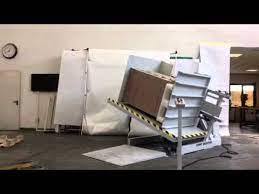
Bridging the Gap Between Physical and Digital
As an engineer, I love technology. I saw the power of automation when I implemented my first PLC-controlled packing line. The key is making sure every piece of equipment "talks" to the central system. A pallet inverter is no different. It's a key node in your internal logistics network, and it needs to be connected.
How a Pallet Inverter Becomes an IoT Device
A "dumb" machine just does its job. An "intelligent" machine does its job and tells you about it. Here’s how a pallet inverter becomes a smart, connected asset:
- PLC Integration: The inverter’s Programmable Logic Controller (PLC) can be programmed to communicate with your factory's central control system. This enables fully automated sequences. For example, an AGV (Automated Guided Vehicle) can deliver a pallet to the inverter, signal it to begin its cycle, and the inverter can signal the AGV when the transfer is complete.
- Sensor Data for MES/WMS: We can equip the inverter with sensors to track key data points. This data is then fed into your MES or WMS for analysis.
| Sensor Type | Data Collected | Value for Management |
|---|---|---|
| Cycle Counter | Number of pallets inverted | Tracks throughput and machine usage. |
| Load Sensors | Weight of each pallet | Verifies load accuracy and prevents overloads. |
| Optical Sensors | Pallet presence and position | Enables fully automated loading/unloading sequences. |
| Motor Amperage | Energy consumption | Feeds into your overall energy management goals. |
| Vibration Sensors | Machine health | Enables predictive maintenance to prevent downtime. |
Enabling Predictive Maintenance and Higher Utilization
One of your biggest challenges is aging equipment and rising failure rates. Your goal of 95% equipment uptime requires a shift from reactive to predictive maintenance. A smart pallet inverter is a perfect tool for this.
By analyzing data from vibration sensors and motor current, your system can detect signs of wear and tear before a failure occurs. It can automatically schedule maintenance during planned downtime, rather than having the machine break down in the middle of a critical shift.
This data also helps you achieve your goal of higher capacity utilization. By knowing exactly how long each cycle takes and how many pallets are processed, your smart scheduling platform can plan production flow much more accurately. The pallet inverter is no longer an unknown variable; it's a predictable, reliable step in your production line. This is the essence of a truly digital factory.
What Does the Real ROI on a Pallet Inverter Look Like for Heavy Industry?
As a business owner, you scrutinize every investment. A new piece of equipment needs to justify its cost with a clear return on investment (ROI). You need to know it will improve production stability and deliver a quantifiable financial return. You can't afford to invest in something that doesn't directly contribute to your bottom line, especially in the cyclical steel industry.
The real ROI on a pallet inverter in heavy industry is exceptionally strong and typically realized within 12 to 24 months. The return is calculated not just from direct labor savings, but from a combination of reduced product damage, lower injury-related costs, increased operational speed, and improved forklift utilization. These combined savings and efficiency gains far outweigh the initial capital expenditure, making it a sound financial decision.
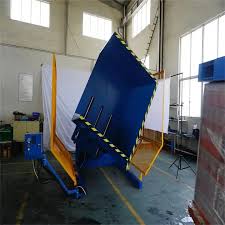
Beyond the Sticker Price: Calculating the Full Value
When I bought the first major piece of equipment for my own factory, the price tag was intimidating. But I did what you do, Javier: I ran the numbers. I didn't just look at the purchase price. I looked at the total cost of not having the machine. The cost of inefficiency, the cost of delays, the cost of risk. That’s how you make a smart investment.
A Five-Year ROI Projection
Let's build a simplified model to compare the Total Cost of Ownership (TCO) for manual handling versus a pallet inverter. We'll use conservative estimates relevant to a heavy industry environment.
Assumptions:
- Initial Pallet Inverter Cost (including installation): $40,000
- Annual Maintenance (Inverter): $1,000
- Labor Cost: $30/hour (2 workers) vs. $15/hour (1 operator)
- Pallets Handled Per Day: 40
- Product Damage Rate (Manual): 1% of value | Product Value: $1,500/pallet
- Injury Cost (Manual): One minor injury event per year at $5,000 (conservative)
| Cost Category | Year 1 (Manual) | Year 1 (Inverter) | Year 5 (Manual) | Year 5 (Inverter) |
|---|---|---|---|---|
| Capital Expense | $0 | $40,000 | $0 | $40,000 (Total) |
| Annual Labor | $60,000 | $7,500 | $300,000 | $37,500 |
| Annual Damage | $6,000 | $0 | $30,000 | $0 |
| Annual Injury Risk | $5,000 | $0 | $25,000 | $0 |
| Annual Maintenance | $0 | $1,000 | $0 | $5,000 |
| Total Cost | $71,000 | $48,500 | $355,000 | $82,500 |
By the end of Year 1, the inverter is already showing a significant cost advantage. Over five years, the savings are over $270,000. The payback period in this model is well under one year.
Strategic Value and Risk Mitigation
The ROI isn't just financial. It's strategic.
- Production Stability: Your goal is 95% uptime. A breakdown in logistics can halt your entire production line. An automated, reliable pallet inverter is a much more stable and predictable process than relying on manual labor, which is subject to availability, fatigue, and error.
- Scalability: What happens when market demand picks up? With manual handling, you have to hire more people. This is slow and expensive. With a pallet inverter, you can increase throughput with the same single operator, allowing you to scale up quickly and efficiently.
- Compliance: As environmental and safety regulations get stricter, having documented, safe, and clean processes is a major advantage. An inverter helps you meet these standards, reducing the risk of fines and shutdowns. It's an investment in the long-term resilience of your business.
My Insights for Javier Morales: This Vietnamese Trend is a Direct Solution for Your Steel Mill
Javier, I’ve read about your challenges and goals. You're a forward-thinking leader in a tough industry. You're dealing with cost pressures, aging equipment, and the need to digitalize—all while navigating market swings. When I was building my factory, I faced similar pressures. Every dollar counted, and every minute of downtime was a crisis.
What you're seeing in Vietnam with pallet inverters isn't a regional trend. It's a global lesson in operational intelligence. It’s a case study in how a single, strategic investment can solve multiple problems at once. Let's connect the dots directly to your steel mill.
-
Your Challenge: Energy and Operational Costs. You see how a pallet inverter crushes labor costs. But think bigger. Faster transfers mean your forklifts run less, saving fuel. Fewer product rejects from damage mean the energy used to produce that steel isn't wasted. It's a small change that contributes to your goal of lowering unit costs.
-
Your Challenge: Aging Equipment and Reliability. Your lines are over 15 years old. You need stability. A pallet inverter is a simple, robust piece of mechanical engineering. It's not a complex, delicate robot. It’s built for heavy industrial environments like yours. By automating a key failure point—manual handling—you introduce a reliable, predictable link in your logistics chain. It directly supports your goal of 95% uptime by making your internal logistics stronger.
-
Your Challenge: Digital Transformation. You can't have a smart factory with "dumb" spots. A pallet inverter, integrated with your MES, feeds you the data you need. It tells you throughput, confirms load transfers, and helps with predictive maintenance. It’s a perfect starter project for your digitalization journey—a tangible win that connects your physical warehouse to your data platform.
Javier, you are looking for a strategic partner, not just a supplier. That is the core of my mission at SHJLPACK. I didn't just sell machines; I helped my clients grow by providing a total solution. A pallet inverter isn't just a machine. It's a solution to high costs, a solution to safety risks, and a solution to data gaps. It's a tool that helps you achieve your goals of lower costs, higher efficiency, and a truly modern factory. The manufacturers in Vietnam are proving it. I am confident it can do the same for you in Mexico.
Conclusion
Replacing manual handling with pallet inverters is a strategic move that delivers immediate cost savings, enhances safety, and integrates seamlessly into modern, digital factories, providing a powerful ROI.



